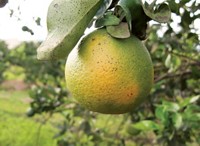Advertisement
Grab your lab coat. Let's get started
Welcome!
Welcome!
Create an account below to get 6 C&EN articles per month, receive newsletters and more - all free.
It seems this is your first time logging in online. Please enter the following information to continue.
As an ACS member you automatically get access to this site. All we need is few more details to create your reading experience.
Not you? Sign in with a different account.
Not you? Sign in with a different account.
ERROR 1
ERROR 1
ERROR 2
ERROR 2
ERROR 2
ERROR 2
ERROR 2
Password and Confirm password must match.
If you have an ACS member number, please enter it here so we can link this account to your membership. (optional)
ERROR 2
ACS values your privacy. By submitting your information, you are gaining access to C&EN and subscribing to our weekly newsletter. We use the information you provide to make your reading experience better, and we will never sell your data to third party members.
Environment
EPA Halts New Uses Of Pesticides Linked To Bee Decline
Neonicotinoids: Activists urge further protection for pollinators; industry objects
by Glenn Hess
April 9, 2015
| A version of this story appeared in
Volume 93, Issue 15
EPA is drawing fire from all sides after it announced restrictions on any new uses of neonicotinoid pesticides, chemicals linked to a decline in bee populations. Requests from pesticide makers to use any of four neonicotinoids on additional crops or in new products or to apply them in new ways, such as by aerial spraying, are on hold until EPA can evaluate new data.
An April 2 letter to manufacturers from EPA says the agency will probably not approve the four compounds for new uses until ongoing risk assessments are complete and the agency has a better understanding of possible threats to young and developing bees.
In the letter, EPA asks manufacturers with pending registrations for the neonicotinoids clothianidin, dinotefuran, imidacloprid, and thiamethoxam to withdraw them or delete any references to using them outdoors.
Without the risk assessment data, EPA “is unlikely to be in a position to determine that such uses would avoid ‘unreasonable adverse effects on the environment,’ ” wrote Office of Pesticide Programs Director Jack Housenger. Manufacturers are producing those data as part of an EPA review of registrations of neonicotinoids under the Federal Insecticide, Fungicide & Rodenticide Act (FIFRA).
CropLife America, the pesticide industry’s trade association, criticized the action. It “will adversely impact growers’ ability to meet future crop protection needs and access necessary products,” the group says. “Pollinator health is essential to farming, and the crop protection industry continually works to develop the most precise products that minimize effects on nontarget organisms.”
An alliance of environmental and wildlife groups says EPA needs to do much more.
“EPA has finally admitted it lacks the basic data needed to determine whether bees, other pollinators, or the environment will be adversely affected by neonicotinoids,” says Peter T. Jenkins, attorney for the Center for Food Safety, an environmental nonprofit.
“If EPA is unable to assess the safety of new uses, the agency similarly is not able to assess the safety of the close to 100 outdoor uses already approved,” Jenkins says. Under federal regulations, he adds, EPA has no option “other than to suspend the existing uses, as well as follow through with its moratorium on the proposed new uses.”







Join the conversation
Contact the reporter
Submit a Letter to the Editor for publication
Engage with us on Twitter